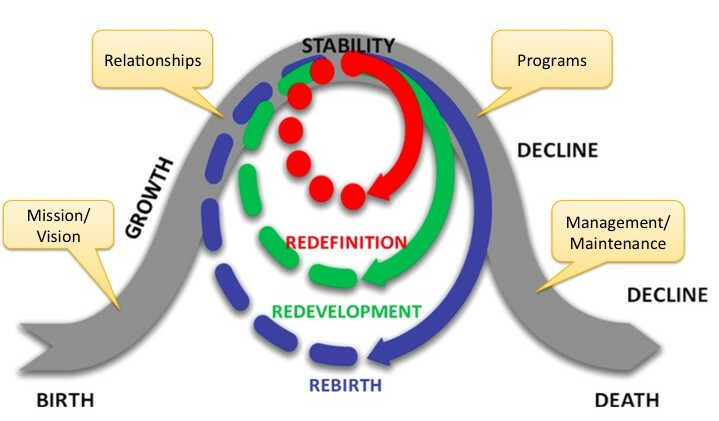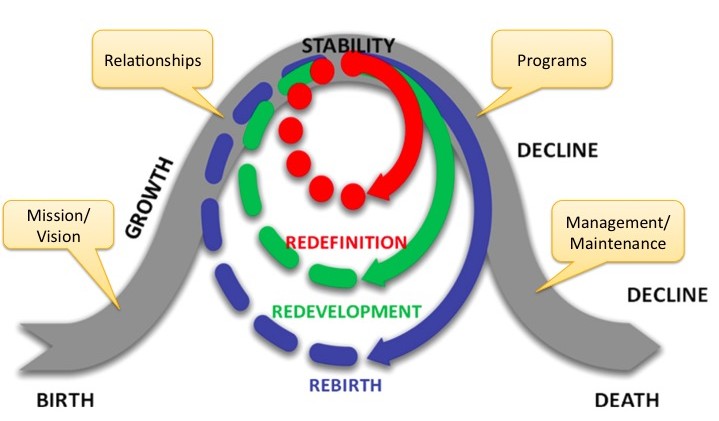
10.01.15 | New Faith Expressions, Congregational Development | by Christie Latona
In 2001, Rev. George Bullard wrote an article, The Life Cycle and Stages of Congregational Development, that became quickly adopted by many persons working to plant and grow churches across denominational lines. (Click on the article title to download the pdf.)
For existing churches, the big idea is to be intentional about disrupting the natural life cycle by causing Vision and Relationships to be more dominant than Programs and/or Management. In this way the church is continually renewing herself. As the graphic illustrates, the closer your church is to the left side of the curve, the less dramatic the effort needed to spark growth. However, if a church has been focused on Maintenance/Management issues for a long time, it may be time to allow the current version of church to die so that a new birth might happen.
Watch Dr. Andy Lunt explain how a simplified lifecycle--one articulated by which of the four organizing principles is dominant--can be used as both a diagnostic and revitalization tool.
Ask your leaders to watch the video and come prepared to discuss:
- Where is our congregation on the curve? Which organizing principle is the one that dominates our decision-making (mission, relationships, programs or management/maintenance)?
- What would it take to get us back to the focus on mission and relationships?
- What might our next steps be?
Additional recommended reading includes a brief Alban Institute article and George Bullard's resource, Congregational Life Cycle Assessment.
